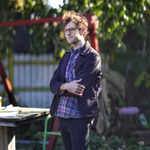Horticulture Terms
Previous: Naming & Classifying Plants
Plant Structure
Woody - stems remain aboveground all year round, a component that's visible in the winter; having a hard stem; buds survive above ground in the winter
Herbaceous - composed of soft tissue and lacking woody tissue, dies down to the ground every year, root system stays in tact, and plant grows from root system the following year.
Plant Types
Tree - A woody plant, typically taller than a shrub, and usually unbranched at the base and having a strong single trunk.
Shrub - A woody plant, typically smaller than a tree, and typified as being branched from the base with two or more stems.
Vine - plant which climbs or sprawls by means of twining stems, suckers, or tendrils; or one that trails or creeps along the ground. A vine may be woody or herbaceous.
Herb - to a botanist, an herb is any non-woody plant (which is different from how us herbalists might use the term, an important distinction to be aware of).
Life Cycle
Annual - a plant that completes its life cycle in 1 growing season
Biennial - a plant that takes two years to complete its life cycle: for most biennials, the first year the plant will develop a rosette of leaves, die back to the roots, and then in the second year send up a flowering stalk to reproduce and complete its life cycle (so first and second year plants look a little different)
Perennial - a plant that will live for two or more years - can be woody or herbaceous
Monocarpic Perennial – similar to biennials but can live as a rosette for more than one year before sending up a flowering stalk to reproduce, set seed, complete its life cycle and die


Member discussion